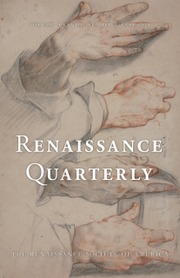This book is a sequel to the author’s earlier monograph Spiritual Wayfarers, Leaders in Piety (henceforth SWLP) published by Harvard University Press in 2008. While the latter focuses on medieval Palestine, the new study examines the spiritual and devotional landscape of medieval Syria. Richly populated by shrines of Muslim ascetics and mystics, it is a worthy object of historical research. As in SWLP (7, 30), the author’s approach is inspired by the “Weberian paradigm of charisma as a form of power embodied in the personality of its holder and arousing strong emotions and appeal” (12). Erphat’s goal is to demonstrate how “the charisma of the revered shaykh [Sufi master] was routinized in symbolic practices and embedded in material objects and places” (52).
Drawing primarily on Arabic hagiographical accounts of the vitas of Sufi masters and holy men of the thirteenth through eighteenth centuries (6–8), the study comprises two parts. The first examines the emergence in Syria of God’s friends or saints (Arabic awliya’) endowed with spiritual and moral-ethical authority. Ephrat’s case studies are the lives of shaykhs ‘Aqil al-Manbiji (d. ca. early twelfth century), Arslan al-Dimashqi (d. ca. 1160–64), ‘Abdallah al-Yunini (d. 1221), and Abu Bakr Ibn Qawam al-Balisi (d. 1258). Their spiritual legacy was embodied and embedded in domed shrines that served as loci of community building and bonding through collective rituals performed by members of different social strata and occasionally also different religious denominations, for example, Sunnis and Shi‘is or Muslims and Christians. Sufi affiliations of Syrian shaykhs often originated outside Syria, especially in Iraq and Iran (e.g., the Rif‘iyya, Qadiriyya, Suhrawardiyya, and Qalandariyya); however, their tombs and lodges gradually transformed into visible symbols of identity of the local population (21–28). Other ascetic and mystical lineages originated in Syria and bore the names of their local founders—for example, the ‘Aqiliyya, which was established by shaykh ‘Aqil of Manbij (25–27; cf. 105–06 and 133–34). In time, “a wave of lodges of native-born shaykhs and immigrant ascetics and mystics swept the entire region” to become an integral part of Syrian devotional life and physical landscape (135). While there were several groups of antinomian dervishes, such as the Haririyya and Qalandariyya, most Sufi masters of the eleventh to thirteenth centuries were respected jurists integrated into the class of Muslim legal scholars and theologians (‘ulama’). The Sufi masters’ ability to interpret and apply Islamic legal norms was as important for their authority as their spiritual powers (33–34). Nevertheless, the Sufis were distinguished from the Sunni ‘ulama’ by their ability to work miracles, foresee the future, communicate with the Prophet and his companions, and explain their disciples’ dreams and hidden desires (44–48). Close ties between the shaykhs and their disciples became the glue that held Sufi institutions together. The disciples’ accounts of the miraculous powers of their masters became part and parcel of the local folklore and hagiographical writings.
The second part of Erphat’s monograph discusses the physical and architectural “emplacements of authority and holiness” (83–99). It describes the “special layout of Sufi lodges and shrines” and their role as enclaves of the saints’ blessing and protective powers (83–86). Such buildings became magnets for visitors seeking the saints’ help and protection. The author discusses various types of Sufi institutions, drawing a clear distinction between ruler-sponsored khanqahs and smaller structures (zawiyas and ribats) supported by the donations of ordinary believers hoping to secure continual blessings of the departed saints and their progeny buried nearby. Ephrat duly emphasizes the critical role of the saints’ descendants and their students in sustaining and popularizing their cults. Not only did they maintain and renovate the tombs of their forefathers but they also composed hagiographies imprinting legendary images of the saints in the collective memory of the local communities.
Overall, the author has successfully achieved the goals stated at the beginning of her book. However, her reliance on Weber’s model of institutionalization of charisma may occasionally appear overly utilitarian and deterministic. It risks making shaykhs and their spiritual and genealogical successors look manipulative or even cynical (10, 13, 28, 34, 37), while deemphasizing the innate human desire for protection against the vagaries of fate, such as foreign invasions (e.g., the Crusades) and epidemic diseases.



